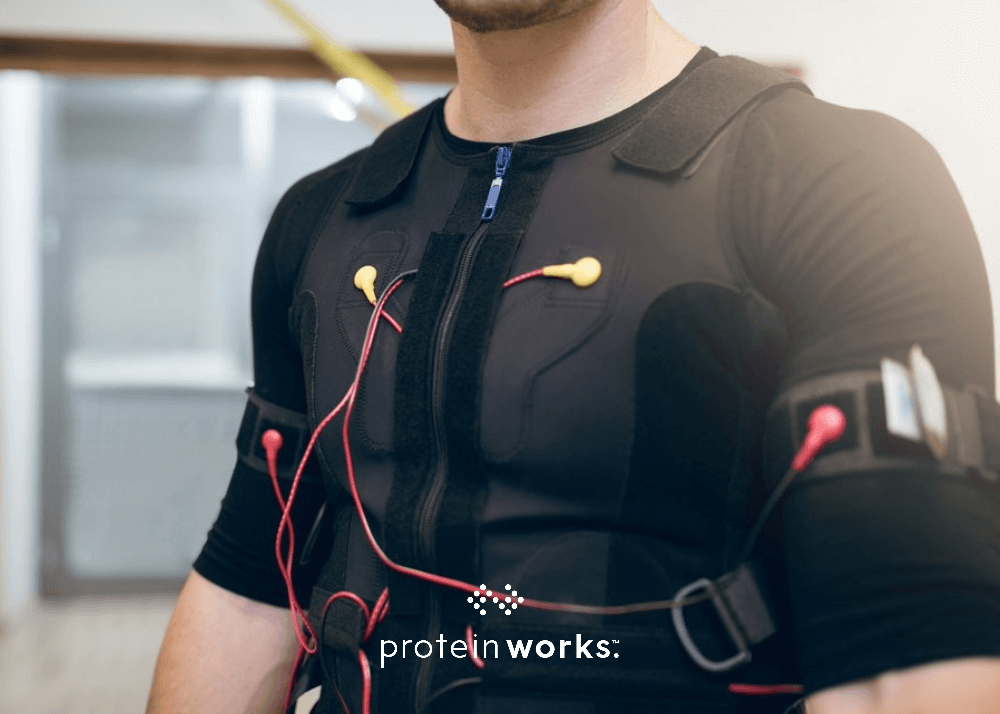
What is EMS Training and How Does it Work?
In the bustling streets of London, a fitness revolution is underway, and it goes by the name of EMS training.
But what exactly is this electrifying trend that involves being connected to electrodes, and is it safe? Let’s delve into the world of EMS training and see if it’s the workout you’ve been searching for.
Discover more information about EMS training below…
What is EMS Training and How Does it Work?
EMS training employs small electrodes placed on your skin or clothing. These electrodes deliver controlled electric impulses to your muscles, mimicking the signals of your central nervous system. This stimulation activates and contracts the muscles in a way similar to traditional exercise, but with external impulses. These impulses reach deep muscle layers, typically challenging to engage through conventional methods. As a result, your muscles work harder than they would in a standard training session, with significantly less effort expended.
While EMS training has been a secret weapon for athletes, it’s recently taken London by storm, especially among city professionals seeking efficient workouts. In just 20 minutes, you’ll accomplish a workout equivalent to an hour of traditional training. But does it yield the same results?
Studies suggest that EMS training might lead to a slightly faster increase in muscle mass compared to regular training, though this remains a topic of debate. Some claim it accelerates fat loss, but research indicates no significant difference between fat loss rates in EMS and conventional training.
What to Expect During an EMS Session
During my sessions at Exerceo in Moorgate and Canary Wharf, I was provided with a cotton top and leggings to change into. A suit was then placed over me, equipped with wet pads to enhance electrical conduction. I had the freedom to adjust the intensity of the electric current in various areas of my body. This allowed me to focus on specific target areas by increasing the percentage in those regions and reducing it in others. So, whether you’re keen on sculpting your glutes or toning your biceps, you have the control.
The trainer guided me through a series of exercises, with 9 seconds of exercise followed by 4 seconds of rest when the impulses paused. As the electrical impulses kicked in, it created a strange, all-encompassing buzz. Performing the exercises was notably tougher compared to doing them without the impulses. From bodyweight exercises to lightly weighted moves like squats, shoulder presses, lunges, planks, and crunches, the intensity was consistently monitored. The trainer’s constant feedback and encouragement kept me going for a fulfilling 20 minutes.
Never did I imagine that a set of bodyweight squats and a 2kg dumbbell shoulder press would leave me so sweaty and breathless. After the workout, I felt invigorated. Despite my initial expectations, the soreness the next day was minimal.
In the subsequent session, I decided to ramp up the intensity of the impulses. The difference was remarkable; I felt the effects for days. It was clear that EMS training engaged my muscles in a way distinct from my usual weight training, HIIT cardio, or running routine.
EMS training holds great appeal for those with busy schedules. In just 30 minutes, including changing time, you can complete a full workout, making it an excellent option for those struggling to find an hour in the evening to hit the gym.
Is EMS Training Safe?
While EMS systems are regulated, it’s important to note that all electrical systems come with potential risks. One common issue with EMS training is turning the impulses up too high, causing muscles to become overly tense and potentially leading to tears.
These tears require a significant amount of time to heal and may result in severe Delayed Onset Muscle Soreness (DOMS) lasting 1-2 weeks. If you experience pain during your EMS workout, reduce the intensity of the impulses.
Research on the long-term effects of EMS training is limited, but for those attending once or twice a week over a short period, no serious side effects have been reported.
Summing Up EMS Training: Is it Right for You?
If you’re pressed for time and can spare only 30 minutes twice a week, EMS training is definitely worth a try. Studies suggest it may aid in building muscles faster than traditional training. However, it’s essential to push the intensity for optimal results and not expect miraculous fat loss or rock-hard abs overnight.
Keep in mind that recovery time may be longer with EMS training, potentially affecting your other training methods. With this newfound knowledge, consider giving EMS training a shot and see how it fits into your fitness routine.





No Comments yet!